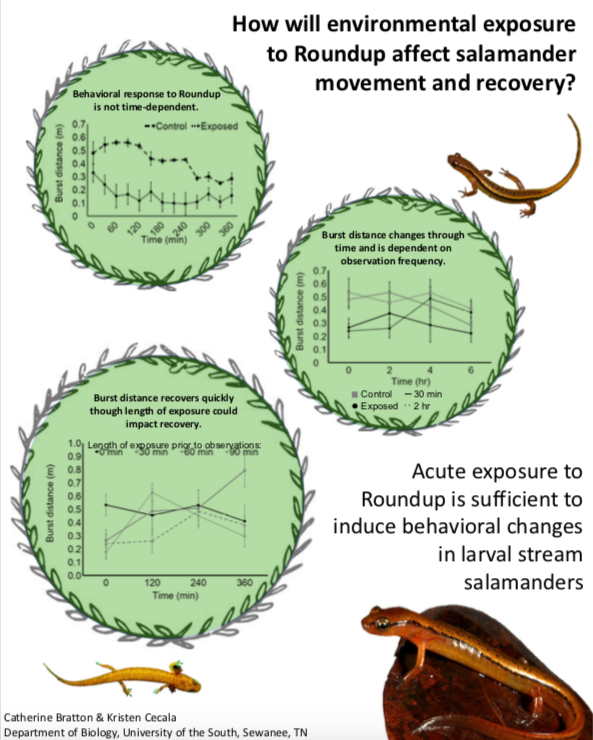Acute exposure of Roundup is sufficient to induce behavioral changes in larval stream salamanders
Glyphosate is a commonly used agricultural pesticide that can have non-target effects on a wide range of organisms. Although directly applied to agricultural fields, runoff during rainfall introduces the chemical into surrounding water bodies. In lotic systems, glyphosate accumulates and negatively affects the physiology, development, and behavior of amphibians. However, these known effects stem from chronic exposure relative to acute exposure experienced by amphibians inhabiting adjacent streams. Previous studies demonstrated a dose-dependent decrease in burst distance associated with glyphosate exposure in stream salamanders, but it is unclear whether and how long it might take for individuals to recover from acute exposure. Our objective was to describe the recovery of stream salamander larvae, Eurycea wilderae, to short-term exposure of glyphosate. We observed that exposed individuals recovered from glyphosate exposure between 2 and 4 hours post-exposure. Length of exposure did not affect responses by stream salamander larvae. Concurrently, we also observed decreased burst responses by unexposed animals that could be due to habituation or exhaustion during our trials, and we recommend that future trials minimize the frequency of sampling. Because burst distance is associated with swimming ability, impairment could temporarily increase predation risk, or more significantly, contribute to downstream displacement of larval individuals inhabiting streams in agricultural areas.
 CLOSE SIDEBAR
CLOSE SIDEBAR
